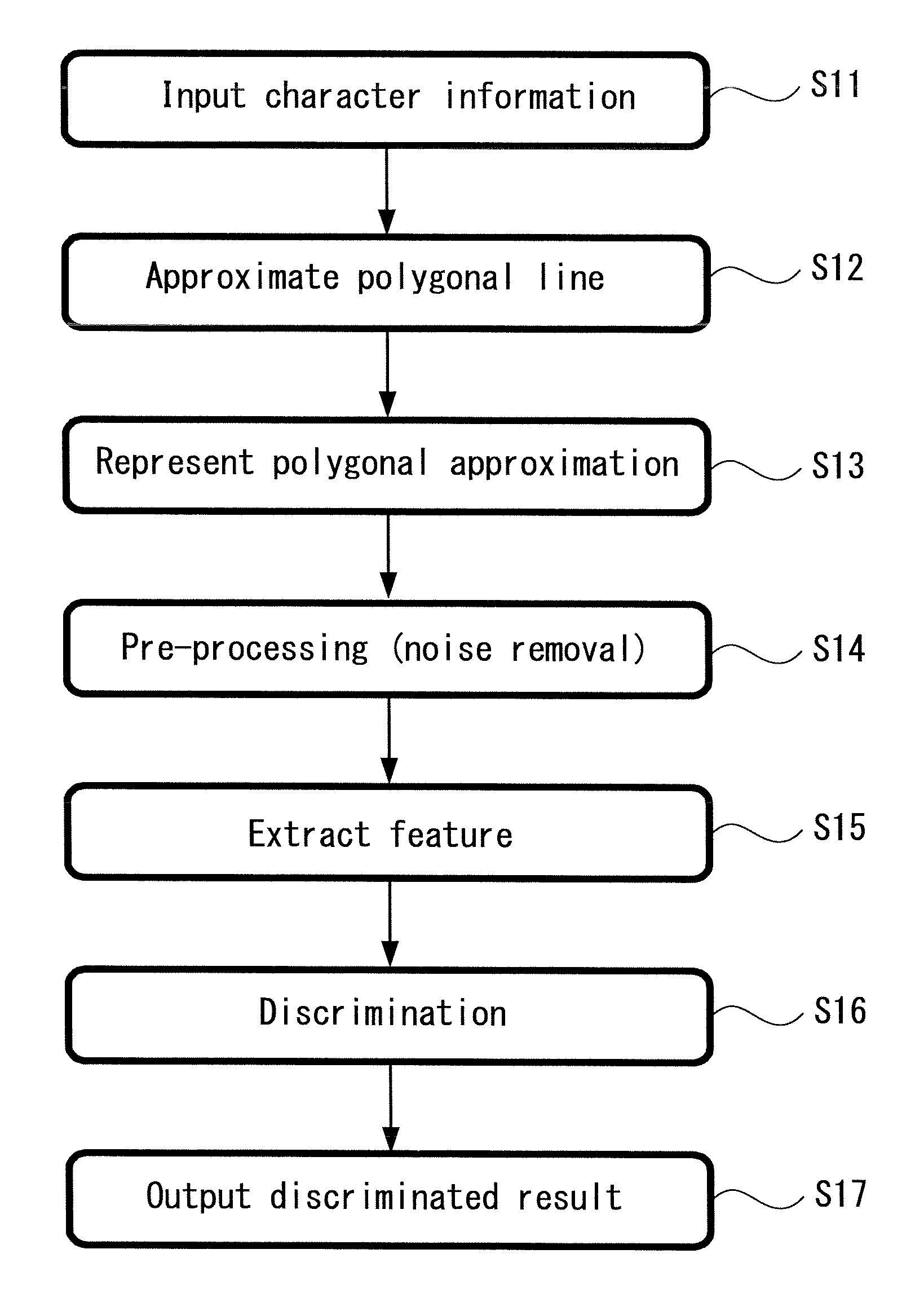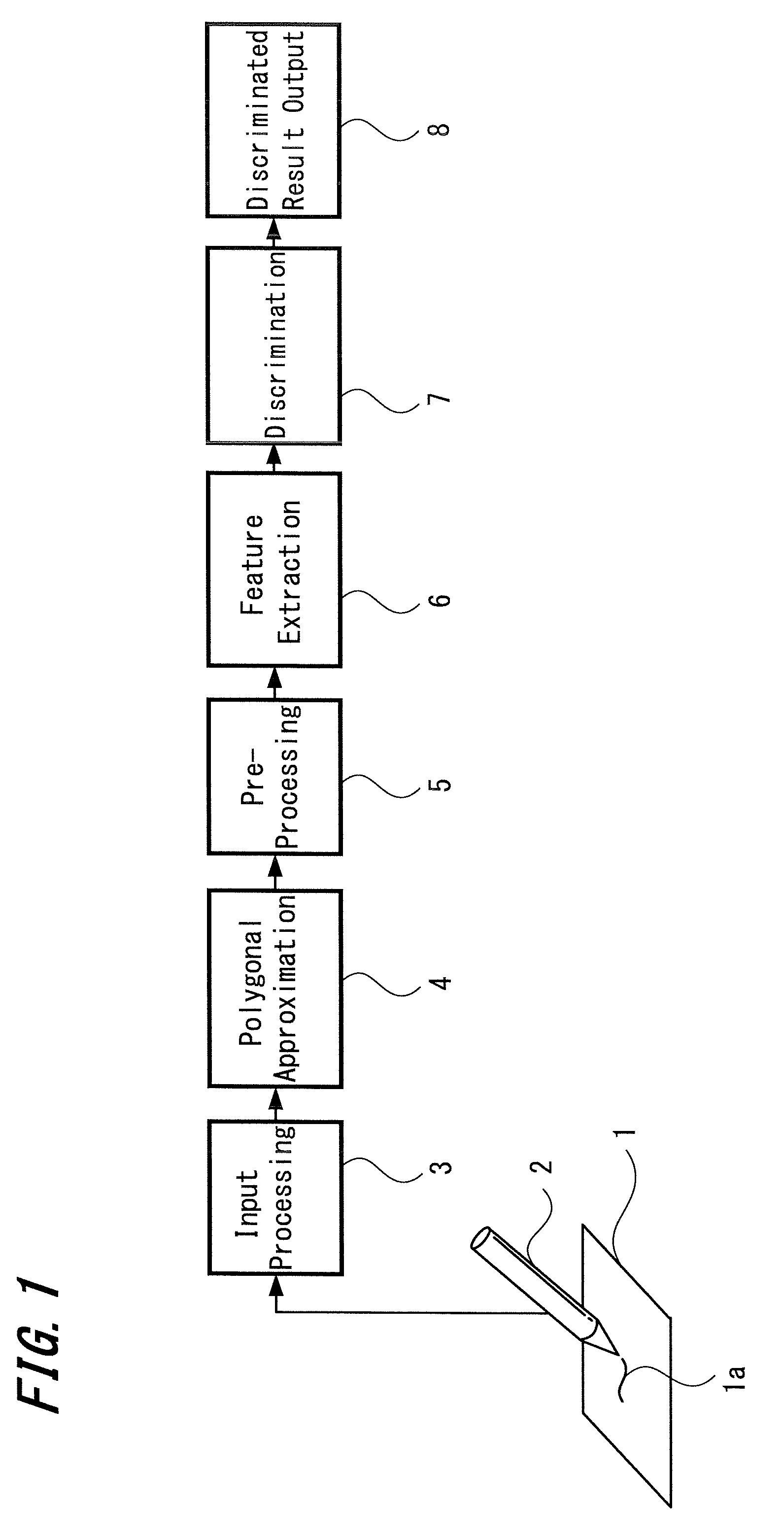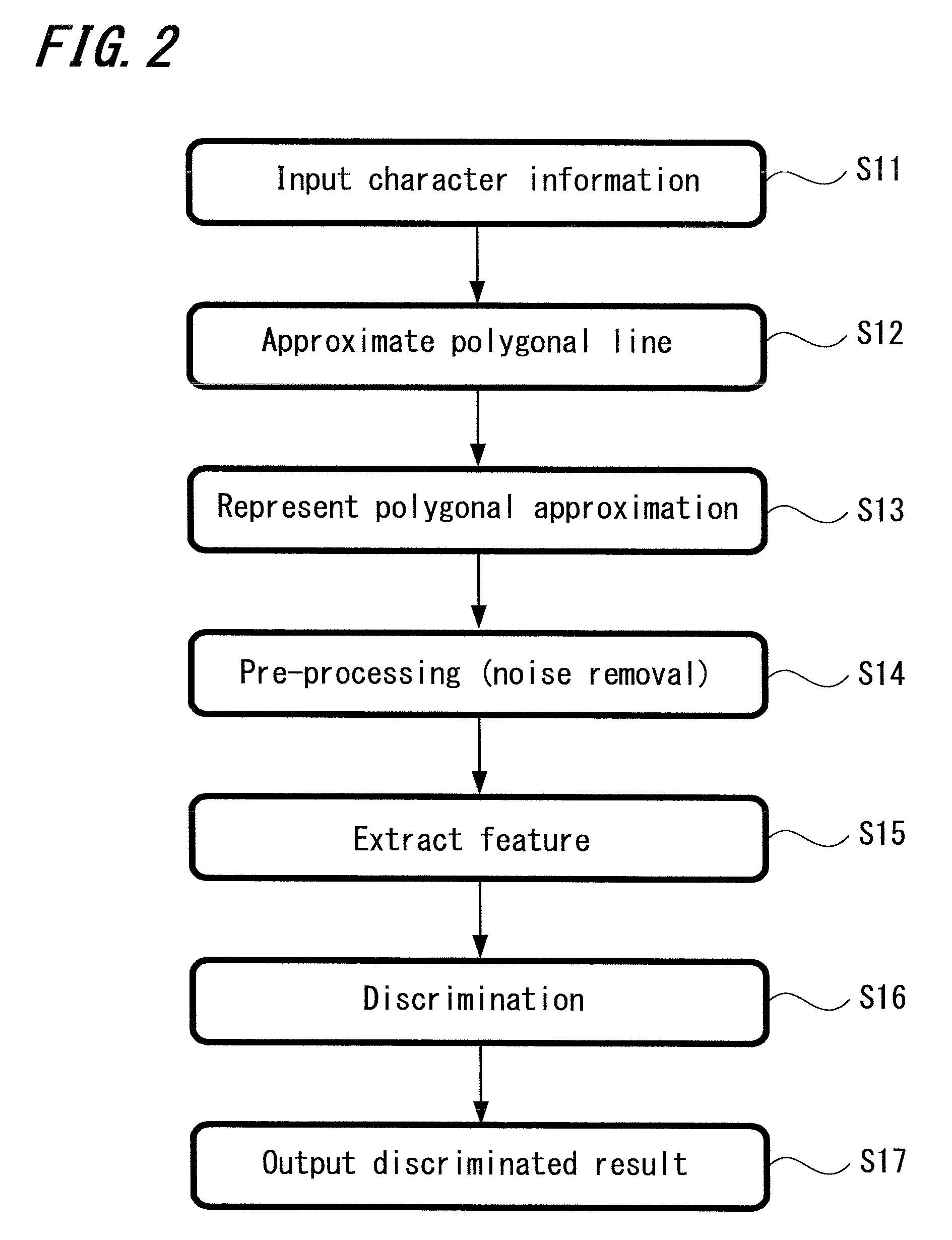Method for handwritten character recognition, system for handwritten character recognition, program for handwritten character recognition and storing medium
a handwritten character and character recognition technology, applied in the field of handwritten character recognition, can solve the problems of destroying the biggest advantage of online usage, requiring considerable computational amount, and requiring considerable advanced and computational normalization
- Summary
- Abstract
- Description
- Claims
- Application Information
AI Technical Summary
Benefits of technology
Problems solved by technology
Method used
Image
Examples
Embodiment Construction
[0086]Embodiments of the present invention are explained with reference to attached drawings, hereinafter.
[0087]In the embodiments, it is applied to a system to which the online handwritten character recognition is performed and an example of constitution of a case in which each processing portion is made to be a hardware configuration is shown in FIG. 1. It should be noted that each processing portion is allowed to be an individual processing portion, as shown in FIG. 1, but it may be a configuration in which each processing portion is performed with a common arithmetic processing portion or the same handwritten character recognition may be performed by installing the one which programmed the handwritten character recognition of the embodiment to an arithmetic processing apparatus of general purpose such as a personal computer apparatus.
[0088]Also, in the following explanation, each concept necessary to the handwritten character recognition in the embodiments is defined with the te...
PUM
 Login to View More
Login to View More Abstract
Description
Claims
Application Information
 Login to View More
Login to View More - R&D
- Intellectual Property
- Life Sciences
- Materials
- Tech Scout
- Unparalleled Data Quality
- Higher Quality Content
- 60% Fewer Hallucinations
Browse by: Latest US Patents, China's latest patents, Technical Efficacy Thesaurus, Application Domain, Technology Topic, Popular Technical Reports.
© 2025 PatSnap. All rights reserved.Legal|Privacy policy|Modern Slavery Act Transparency Statement|Sitemap|About US| Contact US: help@patsnap.com



